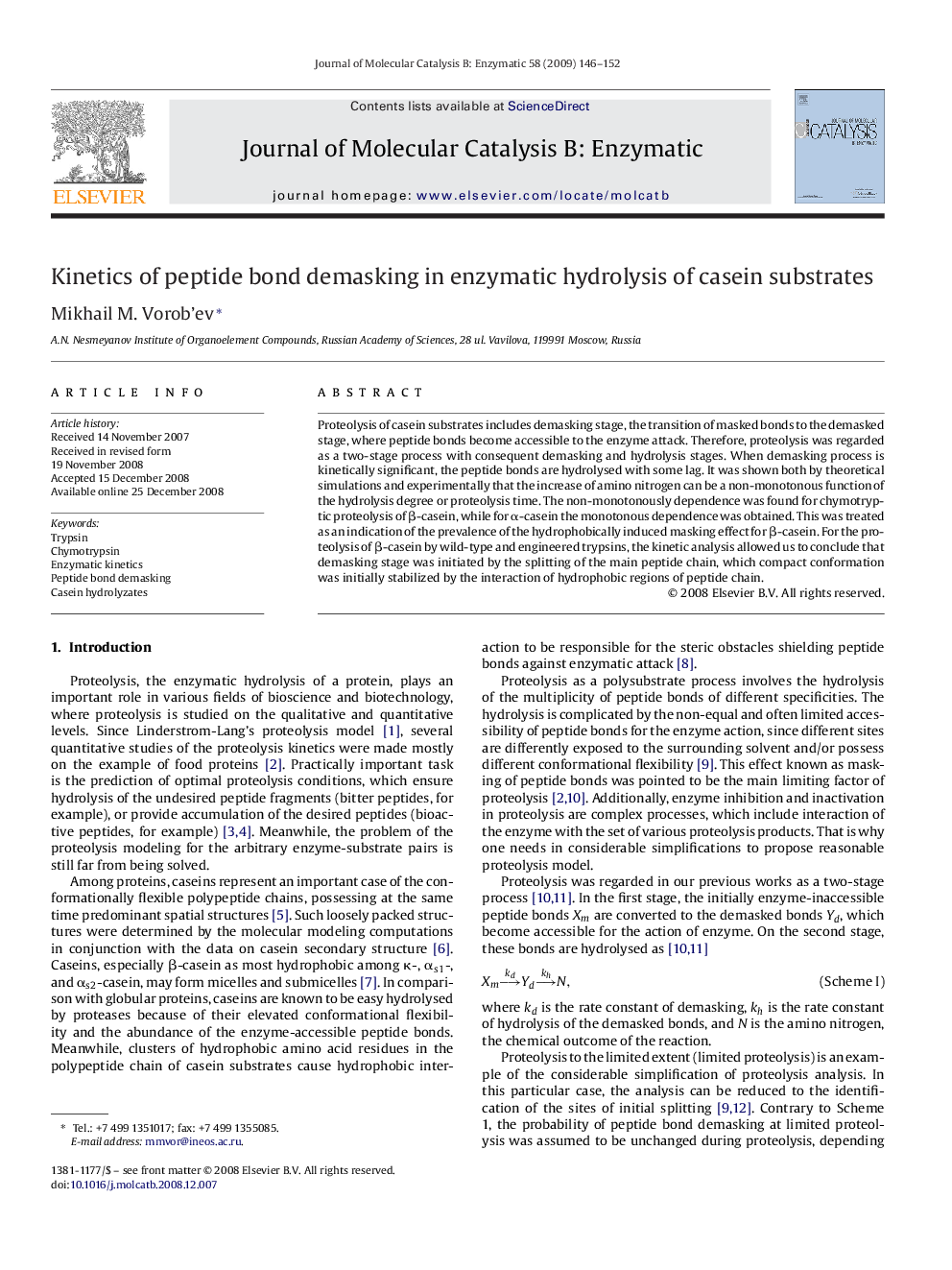| Article ID | Journal | Published Year | Pages | File Type |
|---|---|---|---|---|
| 70706 | Journal of Molecular Catalysis B: Enzymatic | 2009 | 7 Pages |
Proteolysis of casein substrates includes demasking stage, the transition of masked bonds to the demasked stage, where peptide bonds become accessible to the enzyme attack. Therefore, proteolysis was regarded as a two-stage process with consequent demasking and hydrolysis stages. When demasking process is kinetically significant, the peptide bonds are hydrolysed with some lag. It was shown both by theoretical simulations and experimentally that the increase of amino nitrogen can be a non-monotonous function of the hydrolysis degree or proteolysis time. The non-monotonously dependence was found for chymotryptic proteolysis of β-casein, while for α-casein the monotonous dependence was obtained. This was treated as an indication of the prevalence of the hydrophobically induced masking effect for β-casein. For the proteolysis of β-casein by wild-type and engineered trypsins, the kinetic analysis allowed us to conclude that demasking stage was initiated by the splitting of the main peptide chain, which compact conformation was initially stabilized by the interaction of hydrophobic regions of peptide chain.
